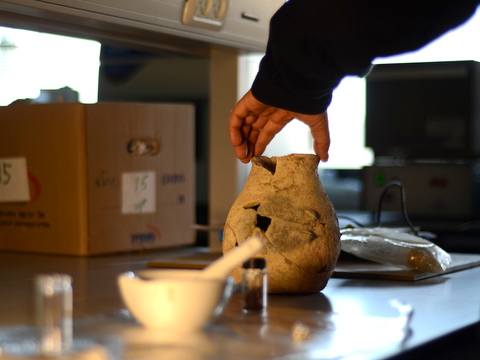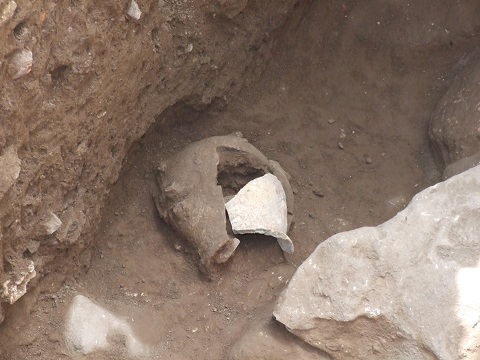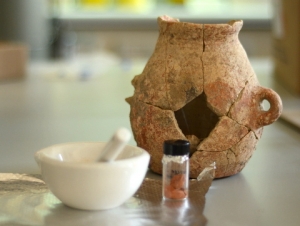The earliest proof for the use of olive oil in the country, and possibly the whole of the Middle East, was revealed at an antiquities site in the Lower Galilee.
Researchers from the Israel Antiquities Authority state that olive oil was already being used in the country 8,000 years ago in a recently published article appearing in the Israel Journal of Plant Sciences.
In 2011–2013 Dr. Ianir Milevski and Nimrod Getzov of the Israel Antiquities Authority directed an archaeological salvage excavation in Tzipori in the Lower Galilee in northern Israel, prior to the widening of Highway 79 by the Netivei Israel Company. This excavation led to research that indicates olive oil was already being used in the sixth millennium BCE.
According to the researchers, this is the earliest evidence of olive oil in the country and possible in the entire Mediterranean basin in a press release by the Israel Antiquities Authority. The researchers noted that remains of an olive oil industry from this period where previously discovered off the coast of Kfar Samir south of Haifa, whereas now at Tzipori, evidence has been found for the first time of the use of olive oil.

“It seems that olive oil was already a part of the diet and might also have been used for lighting. Although it is impossible to say for sure, this might be an olive species that was domesticated and joined grain and legumes – the other kinds of field crops that we know were grown then. Those crops are known from at least two thousand years prior to the settlement at ‘En Zippori,” said Getzov and Milevski.
“With the adoption of olive oil the basic Mediterranean diet was complete. From ancient times to the present, the Mediterranean economy has been based on high quality olive oil, grain and must, the three crops frequently mentioned in the Bible.”
Getzov and Milevski methodically sampled the pottery vessels found in the excavation in order to ascertain what was stored in them and how they were used by the site’s ancient inhabitants. Together with Dr. Dvory Namdar of the Hebrew University of Jerusalem Institute of Earth Sciences, they took small pieces of pottery and utilizing chemical methods for extraction and identification examined the organic remains that were absorbed in the sides of the vessel.
Of the twenty pottery vessels sampled, two were found to be particularly ancient, dating to approximately 5,800 BCE.
These tests revealed that the pottery dating to the Early Chalcolithic period, also called the Copper Age, contained olive oil. A comparison of the results of the extraction from the archaeological sherds with those of modern, one year old oil, showed a strong resemblance between the two, indicating a particularly high level of preservation of the ancient material, which had survived close to its original composition for almost 8,000 years.

Source: http://www.jspacenews.com/


